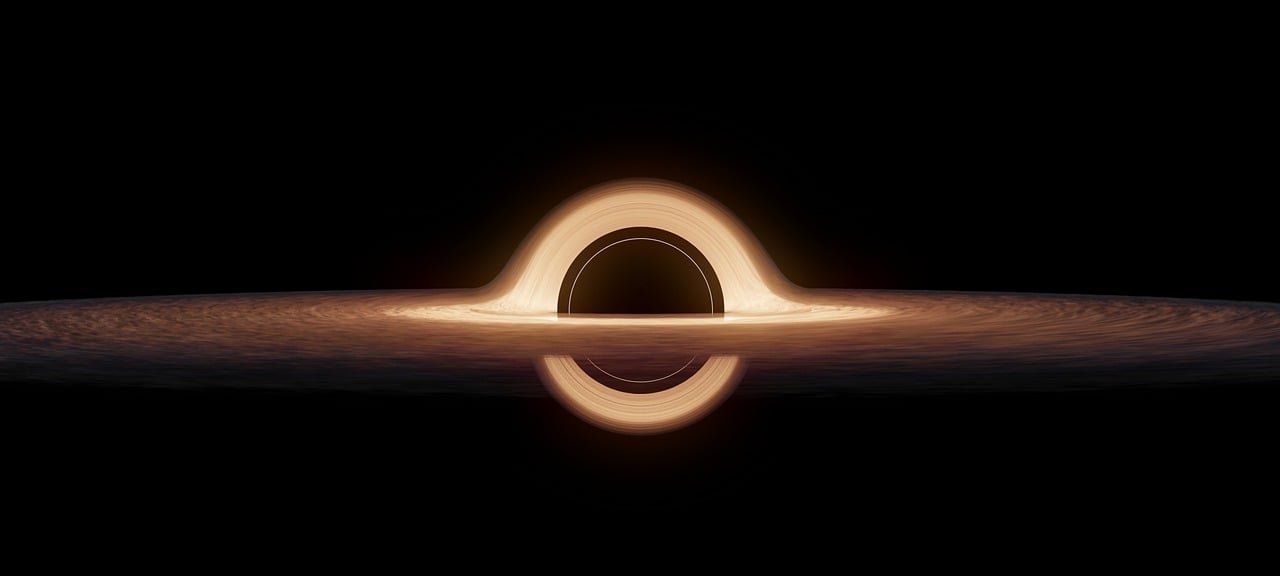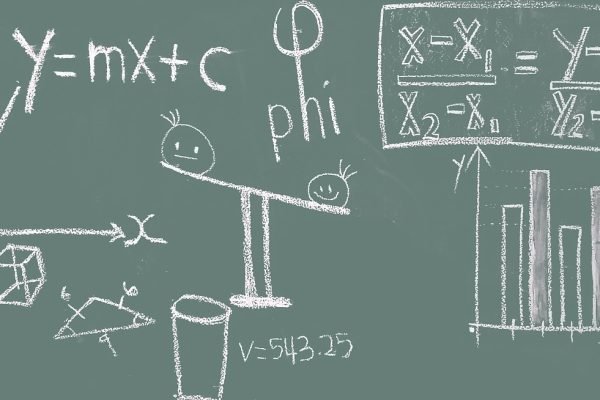The Funhouse in Your Kitchen Drawer
Take a moment and grab a shiny metallic spoon from your kitchen drawer. Look into the back of it, the part that curves outward. You’ll see a tiny, upright version of yourself. Now, flip it over and look into the bowl. If you hold it close, your face appears unusually large. But as you slowly move the spoon away, something strange happens—your reflection suddenly flips upside down. For a moment, it’s like holding a tiny, portable funhouse mirror, a small glitch in reality sitting amongst the forks and knives.
This simple observation is more than just a kitchen curiosity; it’s a gateway to understanding the profound and often counter-intuitive principles of physics that govern our world. The fundamental rules of light, mirrors, and lenses aren’t confined to laboratories or telescopes. They are actively shaping what you see every time you check your car’s side-view mirror, use a magnifying glass, or even look out at the world through your own eyes.
In this article, we’ll explore six of the most fascinating truths about light that are hidden in plain sight. We’ll demystify the magic of that kitchen spoon and reveal the hidden science behind some of the most common objects and experiences, changing the way you see the world around you.
1. The Spoon: Your First Physics Laboratory
That humble spoon is the perfect place to start because it’s not just one mirror—it’s two. A single, common object from your kitchen can demonstrate the complex optical principles that puzzled young Meena at the science center when she saw her reflection grow enormous in one mirror and flip upside down in another. The spoon is an accessible, hands-on physics lab that most of us overlook every day.
The inner, inward-curving surface of the spoon—the part that holds the soup—acts as a concave mirror. The source text defines a concave mirror as a spherical mirror with a reflecting surface that curves inwards. When you hold this side close to your face, you see an image that is erect (right-side up) and enlarged. This is the same principle that dentists use to get a magnified view of teeth, and it’s why the reflectors in torches and car headlights use this shape to create a strong beam. However, as you slowly move the spoon away from your face, a fascinating transformation occurs: the image becomes inverted. Your reflection flips upside down, and as you continue to move it away, the image, which was initially enlarged, keeps getting smaller.
Now, flip the spoon over. The outer, outward-bulging surface is a convex mirror. A convex mirror is defined as a spherical mirror with a reflecting surface that curves outwards. No matter how close or far you hold this side of the spoon, the result is consistent: it always produces an image that is erect but smaller, or diminished, in size. You see a tiny, wide-angle version of yourself and the room behind you. The image size decreases slightly as you move the spoon away, but it never flips.
The surprising takeaway is that one of the most common household items is a powerful tool for demonstrating complex physics. It reveals that the shape of a surface dictates how it reflects light and, consequently, the kind of image you see. Those “unusual, curved mirrors” at a museum are demystified by an object you’ve used since childhood.
2. Why Your Car Mirror Lies (And Why That’s a Good Thing)
If you’ve ever driven a car, you’re familiar with the ubiquitous safety warning etched onto the passenger-side mirror:
Objects in mirror are closer than they appear.
This warning isn’t just a legal disclaimer; it’s a concise lesson in the practical application of optics. The mirror is, in fact, “lying” to you about the distance of the cars behind you, and this deception is precisely what makes it such an effective safety device. The secret lies in its shape.
That side-view mirror is a convex mirror, the same type as the back of your spoon. This is the same principle that made Meena see a tiny version of herself in the second mirror at the science centre. As we learned, a convex mirror’s reflecting surface curves outwards. This curvature causes it to always form an image that is erect (right-side up) and diminished (smaller than the actual object). Because the cars and other objects reflected in the mirror appear smaller than they really are, our brain interprets this visual cue to mean they are farther away than they actually are. Hence, the necessary warning.
So why design a mirror that intentionally distorts our perception of distance? The answer lies in the crucial trade-off between image size and field of view. The source text explains that because the convex mirror is “curved outside, it provides a much wider area of the road behind.” A standard flat (plane) mirror would only show a very narrow slice of the scene, creating massive blind spots. By sacrificing accurate size perception, the convex mirror gives the driver a panoramic view of the adjacent lane and surrounding traffic.
This “flaw” is the mirror’s greatest strength. The “lie” about distance is a small price to pay for the expansive field of vision that dramatically enhances driver safety. This principle is so useful that it’s applied in other areas as well. The large, dome-shaped security mirrors you see in big stores are convex mirrors used to monitor a large area to deter theft. They are also installed at sharp road bends and intersections to give drivers visibility of oncoming traffic from the other side, helping to prevent collisions. In all these cases, the ability to see more is far more important than seeing things at their true size.
3. The Focused Fury of Light: How Simple Curves Create Fire
Sunlight feels gentle and diffuse on your skin, a harmless warmth spread over a wide area. Yet, with a simple curved surface, this same gentle light can be gathered and concentrated into a point of intense, destructive energy powerful enough to start a fire. This phenomenon demonstrates the powerful property of convergence, a key behavior of both concave mirrors and convex lenses.
When parallel beams of light—like those from the distant sun—strike a concave mirror, they don’t scatter. Instead, the inward curve of the mirror reflects them all inward, causing them to meet, or converge, at a single point. A convex lens, which is thicker in the middle than at the edges, accomplishes the same feat, but by bending (or refracting) the light that passes through it.
Activity 10.7 from the source text provides a dramatic demonstration of this principle. By holding a concave mirror so that its reflecting surface faces the sun and directing the reflected light onto a piece of paper, you can see this effect in action. As you adjust the distance of the paper, the scattered reflections coalesce into a “sharp bright spot.” This spot is the point where all the collected sunlight is concentrated. The text describes what happens next: if you hold the mirror steady for a few minutes, the concentrated energy produces enough heat to make the paper “start to burn producing smoke.” Activity 10.11 confirms that a convex lens can be used to achieve the exact same result.
The implication is profound: a simple, passive geometric shape can transform diffuse energy into a focused, powerful beam. This isn’t just a fascinating party trick; it’s a principle that scales up to solve major engineering and energy challenges. As the “A step further” box notes, this exact concept is used in solar concentrators, which use large mirrors or lenses to focus sunlight to heat liquid, produce steam, and generate electricity. The principle is taken to its extreme in solar furnaces, which can concentrate so much solar energy that they become powerful enough to melt steel. All of this begins with the same fundamental rule of optics you can prove with a small mirror and a piece of paper.
Safety first: Never perform this activity without supervision, and never look directly at the sun or its reflection in a mirror or lens.
4. The Universal Simplicity: Two Unbreakable Laws for All Reflections
From the perfect, one-to-one reflection in your bathroom mirror to the distorted, funhouse image in a curved piece of metal, it might seem like there are countless complex rules governing how light behaves. The reality is surprisingly simple. All reflections, no matter how different they appear, are governed by just two unbreakable laws. The variety we see comes not from different laws, but from applying these same two simple rules to different surfaces.
Based on experiments with beams of light, the source text distills these principles into the two fundamental laws of reflection.
I. The Law of Equal Angles:
The angle at which a ray of light hits a surface is equal to the angle at which it reflects off that surface. In scientific terms, the angle of incidence is equal to the angle of reflection (i = r). To understand this, we need to define three key players. The incident ray is the beam of light on its incoming journey, right before it strikes the mirror. The reflected ray is that same beam, reborn, as it bounces off the surface on its new path. The normal is an imaginary line drawn straight out from the mirror, perpendicular to its surface, at the exact point the light ray hits. Think of it as a flagpole planted straight up from the ground. This law simply states that the angle between the incoming ray and the flagpole is identical to the angle between the outgoing ray and the flagpole.
II. The Law of the Same Plane:
The incoming ray of light, the outgoing ray of light, and the normal all lie on the same flat surface, or plane. A simple experiment makes this concept crystal clear. Imagine shining a light ray across a flat sheet of paper so it hits a mirror and bounces back, its path visible on the paper. The incident ray and reflected ray are “stuck” to the flat plane of the paper. Now, if you bend the section of paper where the reflected ray appears, the ray vanishes. It doesn’t curve with the paper because its path is locked into that original, unbroken plane. As soon as you flatten the paper again, the beam reappears. This is elegantly summarized in the source text:
The incident ray, the normal to the mirror at the point of incidence, and the reflected ray, all lie in the same plane.
The most mind-bending takeaway here is not the complexity of these laws, but their profound simplicity and universality. The source explicitly states: “The laws of reflection are valid for all kinds of mirrors — plane and spherical.” So why do curved mirrors create such strange images? Imagine people standing on a curved hill. On a flat plain, everyone’s “up” (their normal) points in the same direction. But on the hill, each person’s “up” is slightly different, depending on the slope where they’re standing. If they all follow the same rule—”throw a ball straight out”—each ball will fly in a different direction. Light is the same. It always follows the law of equal angles, but on a curved mirror, the “normal” changes at every point, sending each reflected ray in a predictable but different direction, creating the distorted images we see.
5. The Great Optical Mix-Up: Why Convex Lenses Act Like Concave Mirrors
As you delve into the world of optics, you might notice a curious and potentially confusing pattern: the shapes that cause mirrors to perform a certain function seem to be the opposite of the shapes that cause lenses to do the same thing. A concave mirror and a convex lens, despite their opposite shapes, behave in remarkably similar ways. This is the great optical mix-up, a fascinating “mirror image” relationship between the two types of components.
Let’s break down this inverse relationship using some behaviors:
- Convergence: An inward-curving concave mirror is a converging mirror; it gathers parallel light rays and focuses them to a point. For lenses, however, it is the outward-bulging convex lens (one that is thicker in the middle) that is known as a converging lens.
- Divergence: An outward-bulging convex mirror is a diverging mirror; it spreads parallel light rays apart. For lenses, it is the inward-curving concave lens (one that is thicker at the edges) that is the diverging lens.
This inverse relationship extends to the types of images they can form. A concave mirror and a convex lens are both capable of producing a wide variety of images—enlarged or diminished, erect or inverted—depending on how far the object is from them. Similarly, a convex mirror and a concave lens are simpler: they both always produce images that are erect and diminished.
This comparison is made clearer in the table below:
| Type | Shape Description | Effect on Parallel Light |
| Concave Mirror | Curves inwards | Converges |
| Convex Lens | Thicker at the middle | Converges |
| Convex Mirror | Curves outwards | Diverges |
| Concave Lens | Thicker at the edges | Diverges |
So, why does this inverse relationship exist? The key lies in the fundamental difference between how mirrors and lenses handle light. Mirrors reflect light, bouncing it off a surface. Lenses refract light, bending it as it passes through the material. To make light rays converge, a mirror must have an inward-curving shape to bounce them all toward a central point. A lens, however, must be thicker in the middle so that it bends the light passing through it inward toward that same point. This is a perfect example of how two different physical processes—reflection and refraction—can achieve the same optical results through inverse geometries.
6. The Organic Camera: The Incredible Lens Inside Your Eye
After exploring mirrors in spoons, lenses in magnifying glasses, and the abstract laws of physics, the final and most profound revelation brings the entire subject home—literally. The most sophisticated and amazing piece of optical technology you will ever use is the one you were born with: the human eye.
The source text states this plainly and powerfully: “Even our eye has a convex lens inside it.” This isn’t just an analogy; it is a biological fact. The very same principles that govern a camera, a telescope, or a microscope are at work within our own bodies, enabling our sense of sight. Our eye is, in essence, an organic camera.
The lens in our eye is a converging, convex lens, the same type that can be used to burn paper with sunlight. Its job is to take the scattered light rays reflecting off the objects in the world and focus them onto the retina at the back of our eye. But what makes the eye’s lens truly remarkable is its adaptability. The text describes it as “quite an amazing lens that can change its shape, which is what allows us to read a book or see something far away.” The tiny muscles in our eye constantly stretch and relax this biological lens, changing its curvature to perfectly focus on objects both near and far—a feat that requires complex mechanical systems in a man-made camera.
This grounds the entire discussion of physics in our own biology. The rules that allow us to build a telescope to see distant galaxies are the same rules that evolution harnessed over millions of years to give us sight. The reflection from a spoon, the warning on a car mirror, the focused heat of the sun—understanding these phenomena means understanding the very mechanism of our own perception. The world of optics is not an external, abstract science; it is the internal, living process that allows you to read these very words.
Conclusion: Seeing the World Differently
From the distorted reflection in a kitchen spoon to the complex, living lens within our own eye, the world is filled with the hidden physics of light. The journey started with Meena’s confusion in a science center, faced with mirrors that twisted and changed her reflection. But as we’ve seen, what appeared to be magic was simply elegant and predictable science. The spoon in her kitchen held the same secrets as the mirrors in the museum.
A curved mirror’s ability to lie for our safety, a lens’s power to concentrate the sun’s energy—these are not random quirks but direct consequences of geometry interacting with light. The world has not changed, but our perception of it can. The rules are simple, their applications are infinite, and they are playing out all around you, all the time, transforming initial puzzlement into profound understanding.
Now that you know the simple rules governing every reflection and refraction, what other “magic” in your daily life is just waiting to be explained by a principle you can now understand?












